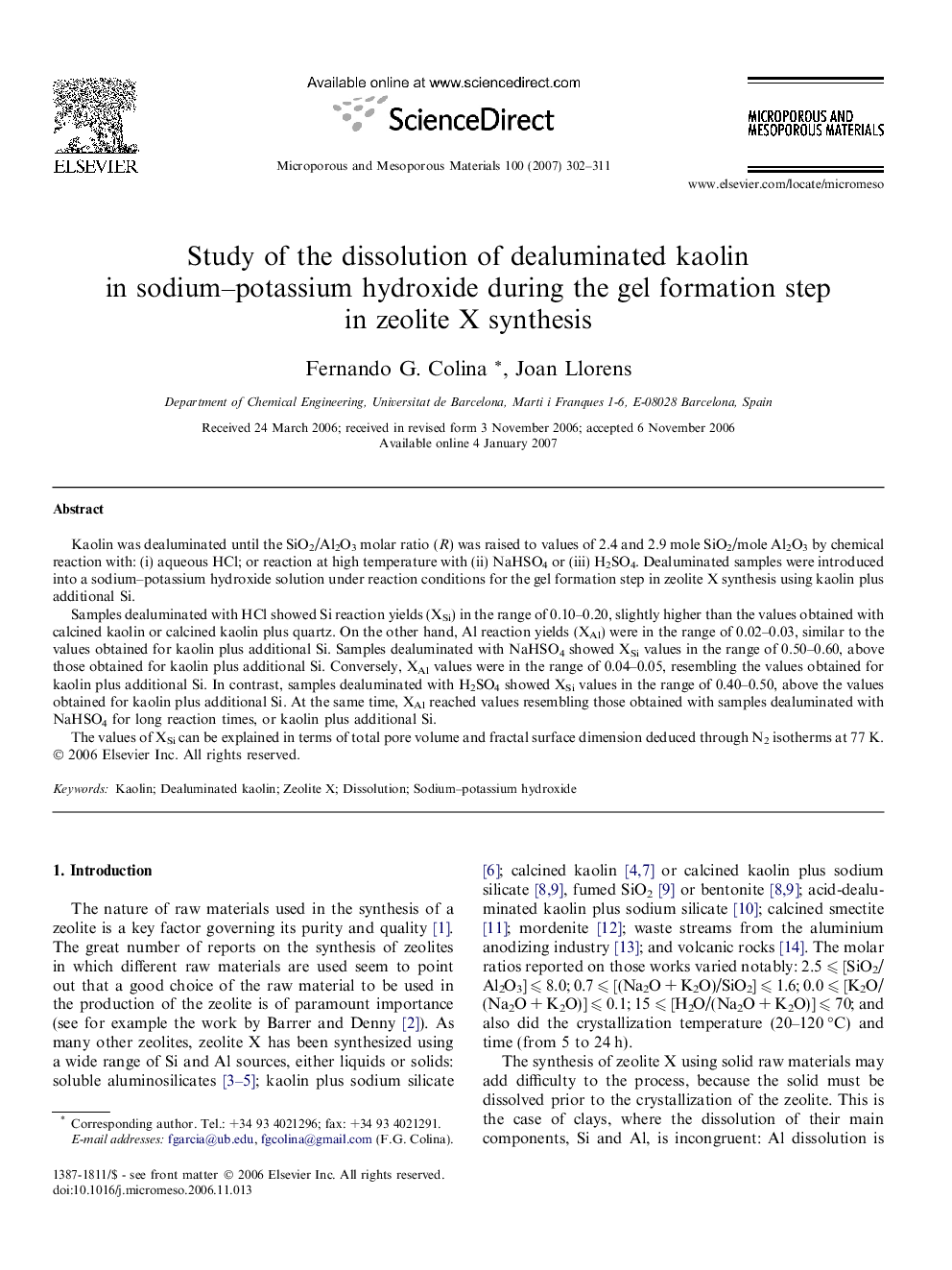| کد مقاله | کد نشریه | سال انتشار | مقاله انگلیسی | نسخه تمام متن |
|---|---|---|---|---|
| 76567 | 49142 | 2007 | 10 صفحه PDF | دانلود رایگان |

Kaolin was dealuminated until the SiO2/Al2O3 molar ratio (R) was raised to values of 2.4 and 2.9 mole SiO2/mole Al2O3 by chemical reaction with: (i) aqueous HCl; or reaction at high temperature with (ii) NaHSO4 or (iii) H2SO4. Dealuminated samples were introduced into a sodium–potassium hydroxide solution under reaction conditions for the gel formation step in zeolite X synthesis using kaolin plus additional Si.Samples dealuminated with HCl showed Si reaction yields (XSi) in the range of 0.10–0.20, slightly higher than the values obtained with calcined kaolin or calcined kaolin plus quartz. On the other hand, Al reaction yields (XAl) were in the range of 0.02–0.03, similar to the values obtained for kaolin plus additional Si. Samples dealuminated with NaHSO4 showed XSi values in the range of 0.50–0.60, above those obtained for kaolin plus additional Si. Conversely, XAl values were in the range of 0.04–0.05, resembling the values obtained for kaolin plus additional Si. In contrast, samples dealuminated with H2SO4 showed XSi values in the range of 0.40–0.50, above the values obtained for kaolin plus additional Si. At the same time, XAl reached values resembling those obtained with samples dealuminated with NaHSO4 for long reaction times, or kaolin plus additional Si.The values of XSi can be explained in terms of total pore volume and fractal surface dimension deduced through N2 isotherms at 77 K.
Journal: Microporous and Mesoporous Materials - Volume 100, Issues 1–3, 23 March 2007, Pages 302–311